Clea Simon's Blog, page 9
December 30, 2021
Highlights of 2021…
This was a tough year! Yes, we had some laughs and some good times: 2021 saw the publication of two of my books: the Witch Cats of Cambridge cozy A CAT ON THE CASE in January (psst… the kindle is still on sale for $1.99) and, in October, the darker psychological suspense HOLD ME DOWN. These were high points for me, as were your notes, emails, and comments, dear readers. But, hands down, the best moment of the year had to be when that poor lawyer couldn’t turn off the cat filter his daughter had installed on Zoom…
So as we say goodbye to 2021, I give you, once again: “I am not a cat.”
December 29, 2021
Not a “Best of 2021” list
So, I wanted to write a Ten Best list. This isn’t it (for one thing, I’ve included 12 titles — plus a ringer). Instead, these are books that stayed with me and a few that I’ve been dipping into when I want a break (looking at you “Around the World in 80 Books”). I’m sure I’ve overlooked a few that were important to me, and I know that as soon as I post this, I’ll think of others. But the end of the year is a deadline I want to honor and so here’s my list. Did any of these books resonate for you? Are there others you wish I had included? I’d love to hear your picks and pans. Please, let me know!
(Here’s the list on Bookshop.org so you can click through and buy from an indie: https://bookshop.org/lists/some-of-my... )
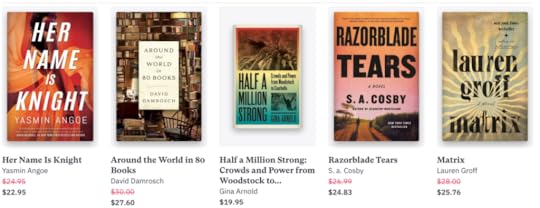
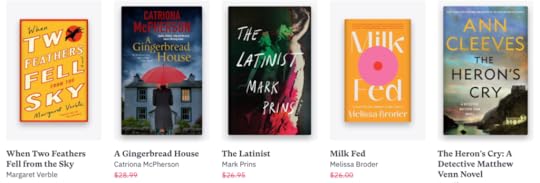
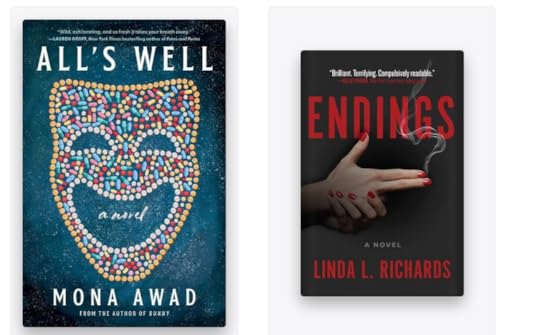 https://bookshop.org/lists/some-of-my...
https://bookshop.org/lists/some-of-my...
December 28, 2021
Stephen Mitchell’s “The First Christmas”
As many of you know, I still review for the Boston Globe. I don’t share all my reviews, but this was a particularly timely book – a Zen take on the Nativity (with a gorgeous illustration). Read it online here.
BOOK REVIEW
Away in a manger in ‘The First Christmas’A new nativity scene emerges in Stephen Mitchell’s contemporary exegesisBy Clea Simon Globe Correspondent,Updated December 23, 2021, 5:09 p.m.1
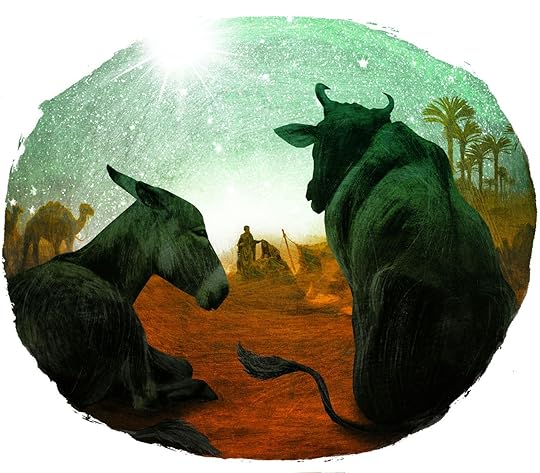 ALE+ALE FOR THE BOSTON GLOBE
ALE+ALE FOR THE BOSTON GLOBEJohn Milton was likely referring to his own blindness when he penned the line, “they also serve who only stand and wait,” but translator and author Stephen Mitchell seems to have taken it as gospel for his “The First Christmas.” Part fable, part comparative religion study, this contemporary exegesis of the Christian nativity story has something for everyone — and, most likely, much to offend some traditional believers as well.
Mitchell’s predisposition toward the unorthodox is made clear in his bio: “educated at Amherst, the Sorbonne, and Yale; and de-educated through intensive Zen training.” For this odd but charming little book, he harnesses both his impressive scholarship and his Buddhist beliefs to explore the ideas of faith, sacrifice, acceptance, and love.
Taking the two scriptural accounts of Jesus’s birth as his source, Mitchell re-imagines the scene from the points of view of its other characters. At its center are the struggles of Mary and Joseph, whom Mitchell renames Maryam and Yosef as more culturally appropriate for Jews of their era. Following a charming introduction of the generous, frazzled innkeeper doing his best for the weary couple, Mitchell gives us first Maryam. Exhausted but full of love, she’s about to give birth as she follows her husband and the innkeeper to the stable, the best shelter the latter can offer. By this point, she is resigned, almost more of a vehicle for what is to come than a character. But Mitchell takes us back to the Annunciation, when the angel Gabriel informs her that she is to bear the baby Jesus, here called Yeshua.
In the passages from the gospels of Luke and Matthew, quoted at the book’s end, Mary accepts her fate readily, almost automatically. But by putting his characters in the reality of their time, Mitchell explores the weighty implications of her compliance. Although young, the Maryam that Mitchell imagines is not naïve; the author depicts her as sexually aware and eager for her marriage. Cognizant of Judaic laws, she knows conceiving a child before her marriage would be “a kind of adultery.” Her husband-to-be would be forced to “put her aside,” and “she would be shamed in the sight of everyone, as a depraved woman.” It’s a concept repugnant to her pious and loving nature but, bowing to the power and magnitude of the angel, she resigns herself to what she expects to be a grim future. By imagining her as a practical young woman, Mitchell highlights the enormity of what she is willing to sacrifice by her acceptance.
Yosef’s progress charts a similar, if subtler, path. From jealousy and anger, he too moves to acceptance and love — shedding even the shame he felt at having doubted the purity of his bride-to-be. “[i]t didn’t matter. He had come back to her. It was a new beginning.”
If these two humans are the soul of the book, the animals in their company are its heart. In one of the more lighthearted segments, Mitchell imagines an ox, the sole occupant of the stable before the young couple arrive, as a thoughtful observer, playing on the double meaning of “ruminative,” an animal that chews its cud. “I pride myself on my tolerance,” the ox says. But this beast is no saint, and Mitchell gently pricks his pride — as well as his own cross-religious teachings — when he has the ox note that “in India we are worshiped as gods.”
“This should surprise no one, since India is a land of great spirituality” the ox reasons, explaining, “it is only natural that humans who meditate should honor animals who ruminate.”
The donkey, whose playful narrative ends this short book, has more overt attitude. Accepting the greetings — and some smiles — from the lower angels, she chafes a bit when the cherubim ignore her. Retelling the biblical story of Balaam’s ass, who saved her person from an angelic indiscretion, the donkey explains that her breed’s nature — to serve — is actually a high and proud tradition, matched only by their stubbornness (which she explains as a “refusal to capitulate to authority”). Holding donkeys above such animals as horses, who “lack any capacity for critical thinking,” she nonetheless embodies perfect humility in her love for Maryam. “I am my lady’s handmaid,” she says. “She has only to ask.”
The author’s particular intellectual leanings are most openly expressed in the section on the wise men. Drawing on Hindu sources, including the Bhagavad Gita and the writings of Sri Ramana Maharshi, as well as the Jewish Talmud, he envisions the exalted visitors as two Jewish scholars — students of the great rabbi Hillel the Elder — who have spent the previous 17 years in India seeking wisdom. Disciples of a guru who exemplifies “radiant simplicity,” a state of open and absolute acceptance, the two follow a star back to the Holy Land, where they see at a glance the baby Yeshua’s destiny. “[S]alvation, which was another name for freedom, would not come later. It could only come now. It had already come, and it was here for everyone, always.”
With his deft, conversational style, Mitchell manages to shoehorn this decidedly Zen insight into the Christmas message. The most unorthodox of the re-imaginings, it joins the other viewpoints as good intellectual cud to chew over, which the ox would surely appreciate, and toothsome fare for a long winter’s night.
THE FIRST CHRISTMAS: A Story of New Beginnings
By Stephen Mitchell
St. Martin’s Essentials, 224 pp., $21.99
Clea Simon is the author, most recently, of “ Hold Me Down .” She can be reached at www.CleaSimon.com .
December 23, 2021
Happy Jólabókaflóðið!
Iceland’s Jólabókaflóðið – which translates to “book flood” – is a great holiday born of necessity. Although this northern nation has a great literary history, its island location has at times left it isolated. In the lean years following World War II that meant shortages of many imports – but not of books, which were produced domestically. In 1944, the Icelandic Journal of Books (Bókatíðindi) published a list of all newly published book – and distributed the list to every household, which made giving books a snap! These days, the tradition calls for giving books on Christmas Eve, and then spending the evening reading (often with a mug of hot cocoa). What could be cozier?
https://www.canva.com/design/DAEzM7lN...tTime to cuddle up with a good book!
December 20, 2021
Five compelling questions
That’s the name of Shawn Reilly Simmons’ podcast, and now I know it’s true. Shawn — an author and one of the brains behind the annual Malice Domestic traditional mystery festival — is super easy to talk to, and that means we authors tend to spill the beans about Hold Me Down, my writing process, my greatest fears, and more. Curious? Listen in here.
https://anchor.fm/compellingfive/episodes/EP34-5CQ-for-Author-Clea-Simon-e1be3jmDecember 15, 2021
Gina Arnold: The Monkees, music, and me
I read Gina Arnold long before I met her. When I was coming up as a music writer, in the ’80s, she was already an established critic, with bylines in Spin and the Village Voice. Somewhere in there — in between gigs with Rolling Stone, Entertainment Weekly, and a host of other publications — she also got her doctorate in modern thought and literature from Stanford University and has since turned her doctoral thesis into an astounding new book. Called Half a Million Strong: Crowds and Power from Woodstock to Coachella, it tackles all those things we know in our gut to be true — that feeling that we’ve found “our tribe” in music, the collective power of concerts — and analyzes them with the same perceptive take that she brings to criticism itself.
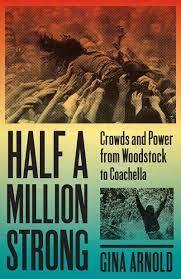
This week, with the passing of the Monkees’ Mike Nesmith, she and I got to talking. This is the result:
You Once Thought: The Monkees Music and Me.
One upon a time, not that many years ago, I was standing in a long line behind a diving board awaiting my turn when the Monkees came on the loudspeaker. It was 7 a.m. in the morning and I was sopping wet and freezing. The line was a very long line, made up of a lot of ladies over 50 competing at US Master’s Nationals. In one way it was a grim scene, but that all changed when the song came on. Immediately, the woman in front of me, my main rival as it happened, began jumping up and down. “I love this song I love this song!” she gasped, and began singing:
 Gina at the 2015 World Championships
Gina at the 2015 World Championships“Oh, I could hide ‘neath the wings
Of the bluebird as she sings
The six o’clock alarm would never ring” (she sang).
And I surprised myself by joining in:
“But it rings, and I rise
Wipe the sleep out of my eyes
My shavin’ razor’s cold and it stings!”
On the last line, the two of us looked each other right in the eyes, and literally shouted the lyrics at each other, as if they were (as is written above) in italics. And then, of course we burst out laughing. What a silly lyric! What a silly song! And yet! Was it? Because we had risen at 6 a.m. We had wiped the sleep out of our eyes. We had just used shavin’ razors, as one does before a diving meet…in short, it was weirdly apropos of our singular circumstances, but even if it hadn’t been, that song, sung right then, by two old ladies in too-tight bathing suits as the mist of the swimming pool rose around us, made a great song sound ever so much better.
And so of course it was the moment I thought of when I read the Mike Nesmith died last week, because it said something not only about the Monkees, but about popular music in general and its role in my life. I read a meme recently that said, “Art decorates place, music decorates space.” The music of the Monkees decorated my childhood, but they also decorate the present, as at the pool that day when they lifted the hearts of everyone present, even that of my biggest rival; when for a second they broke through some kind of space-time continuum and the air shivered and cracked as we all existed on the same plane in it, regaining our lost youth.
The Monkees break the bank when it comes to the number of deposits in their music appreciation account. You could conceivably be bored by the Beatles, and the Stones are questionable in a number of areas starting with their super creeper lyrics. But there are no possible pitfalls or fences around anything to do with the Monkees. There is nothing not to love about them…at least, not at this point. Back in the day, I imagine, there were a lot of guys who put them down for being manufactured — “The PreFab Four,” I heard they were called. But little girls like Jennifer (my rival) and I had no false ideologies to prevent us from loving the well-written music and the charm of their personas. And as time went on, others recognized it too. I remember feeling so validated when Paul Westerberg played “Daydream Believer” at a solo gig I went to in the 1990s, and I realized that it wasn’t just a song I liked when I was a little girl, but a song well worth liking now: a song that even Paul Westerberg liked. When he sang, “You once thought of me, as a white knight on a stead,” I got a big lump in my throat. That one word, “once,” just says it all, doesn’t it?
Clea’s new book, Hold Me Down, captures a little bit of this feeling — that sweet but melancholy emotion that beloved old music can conjure up; the uncomfortable sense that age is both the main fact of our life and also the least important. Her book is set in the present, but the characters have a lot of memories of an indie rock past — as do I, I should add: as do I. My own books about music – like my most recent Half a Million Strong, which is about why we loved to go to music festivals despite the fact that they are sort of dreadful — also recapture le temps perdue, but I wonder sometimes if I dwell too much on those things; if I should be moving on, if music should always, as I once used to swear, be new.
The closed world that Clea and I used to roam around in is no longer with us, and that is probably a good thing, not a bad one: everyone needs to make their own musical community, and if we all only turned to older tunes to do that, the air around us would get positively stale. That’s why I always think it’s odd when people drag their little kids to see the Rolling Stones or Bruce Springsteen. How could they ever experience what we did, through that music?
Anyway, I am not convinced that kids today create their identities around the music they listen to anymore – the ways they listen to it, and thus its role in their lives, is just so different than the way we did, that is, that Clea and I, and even Jennifer, my diving rival, did. But old music is still worth writing about, and celebrating, and musing upon, and remembering, isn’t it? Publishers seem to feel differently, but that’s my working theory at the moment. — Gina
Click through for the official Monkees’ “Daydream Believer” video, honest!December 12, 2021
“Rough and redemptive” raves Fredericksburg Star
Overjoyed about this rave review of HOLD ME DOWN in the Sunday Fredericksburg Free-Lance Star:

 SEX, DRUGS, MUSIC —AND MURDER
SEX, DRUGS, MUSIC —AND MURDERFor a few rockers—the Rolling Stones are the archetype—the road goes on forever.
For many, it detours into ordinary life: work, family, normality.
For others, it crumbles into rehab, retreat, regret and repressed recollections—as it does for Gal Raver, the one-time vocalist and leader of an all-female, Boston-based band in Clea Simon’s “Hold Me Down” (Polis Books, $26.99, 280 pages).
As the story opens, Gal and two bandmates are performing a memorial benefit for the group’s late drummer, Aimee Lanell, a recent victim of cancer. While performing, Gal sees a face in the crowd, one she soon realizes belongs to ex-roadie Tom “T.K.” Kennedy.
The next day, Aimee’s estranged husband, Walter, is charged with homicide— and to the shock of their daughter, Camille, refuses to defend himself and plans to plead guilty.
Enter Gal, who’s determined to investigate. But her selective and impaired memories of two-plus decades earlier complicate her efforts.
Simon, the author of three works of nonfiction and 28 previous mysteries, began her career as a rock critic. She brings her bounty of experience and knowledge to “Hold Me Down”—a story steeped in the requisite sex, drugs and rock ’n’ roll—but also one that eschews the gratuitous.
Ricocheting between past and present, Simon unfolds the story at a quick-but-never-rushed pace while simultaneously peopling it with imaginatively created and adroitly rendered characters, none of whom fall into the category of cardboard cutouts, and of whom Gal is particularly memorable.
At once rough and redemptive, “Hold Me Down” explores the intensity of youth, the inertia of middle age—and the eternal possibility of awakening.
[image error]Read the entire mystery roundup here: https://fredericksburg.com/entertainm...
December 8, 2021
#TBT That’s Throw Back Tewksbury!
Want to set your mystery in a rock club? Hiding clues in art? You might want to join this Tewksbury Public Library writing group! At the invitation of the lovely Library and fellow crime fiction author Dale T. Phillips, I did my best to explain not only how I used the music world in Hold Me Down, but why – and then Dale moderated the great questions that came in! (And, no, I don’t look this crazed throughout!)
December 5, 2021
Understanding monsters, surviving monsters
Nobody in our high school was completely surprised when Joel Rifkin turned out to be a serial killer…
(This essay originally ran on the SHOTS crime and thriller ezine, which you can access here (or go to http://wwwshotsmagcouk.blogspot.com/2021/11/understanding-monsters-surviving.html )

Were we shocked? Sure. The quiet kind of nebbishy guy who took photos for our high school newspaper and yearbook, Joel never seemed like a threat. Was he awkward? Antisocial? Yeah, sure. But this was high school, when the best of us were only fronting. And those of us who spent our after-class hours on the Jet Gazette? Well, we were far from the coolest kids by any count.
But were we surprised? Well, not really. Even discounting the bullying, which the press made so much of, we kind of knew something was wrong. There was a reason none of us wanted to get too close to Joel. Maybe we could sense the rage behind those thick glasses. Certainly, to the 17 young women he killed – sex workers who had fewer options when it came to avoiding intimacy – he was a monster.
My particular monster had a different face. A college classmate at an elite school, he was supposed to be a comrade. A colleague, if not a friend. At least that’s what I thought when he showed up at my door one night, maybe a month after we’d all moved in freshman year. He must’ve heard that I’ve been fighting with my boyfriend. I suspect the whole dorm heard us yelling, especially when R. stormed off and left me sobbing. And here he was with a pitcher of bullfrogs, a sweet lime drink offered in a spirit of camaraderie. Along with, that is, a shoulder to cry on until it turned into something more. An arm around my middle, pulling at me. Hands on my upper arms, holding me down.
For years I struggled with that disconnect. I was young. I had been stupid. Perhaps he had misread my signals. Maybe I had given some kind of consent, after all. Something that sounded like “yes” to a young man who might have been as drunk as I was, or so I told myself. But as I dealt with the aftermath – the unwanted pregnancy and its termination – I also had to acknowledge that there had been no further contact, no remorse and none of the awkward social outreach that one would expect from a comrade, a neighbour, and a classmate.
Ultimately it was a letter from his roommate decades later that allowed me to see everything clearly. Ostensibly reaching out with an offer to answer any questions – once again, that shoulder to cry on – he was clearly seeking absolution. That I wasn’t ready to give, but I did take advantage of the offer and fired off questions. What I learned confirmed what I had come to suspect. No, I was not the only woman his roommate had targeted. In fact, he kept a bottle of over-proof rum purely to prey on vulnerable women. No, they hadn’t stayed in touch. Despite his complicity all those years before, my new correspondent claimed to actively dislike his roommate – and what he did. Would he call it rape?
That’s where he drew the line. Instead, he talked about how his roommate would use alcohol to “try to have sex with women.” He was reaching out, he said, in the hope that I would be able to “let bygones be bygones.”
Was I shocked? Not really. I’ve lost that capacity, I think, at least in terms of certain forms of duplicity. More to the point, I realised then how far I had already moved on.
These days, I write crime fiction. It’s gratifying to set the world right, to see justice done. More important, with psychological suspense I can work through the impact of trauma and survival to allow my characters to achieve a full understanding of what happened and why. But even at my darkest, my books don’t deal with serial killers. What I write are the monsters I want to understand. The ones who live among us, with their smiling faces and social graces. The ones who know how to destroy us from the inside.
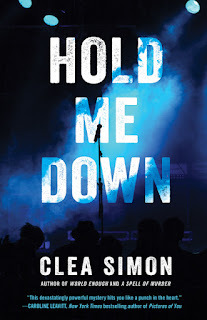
Hold Me Down by Clea Simon (Polis Books) out now
This riveting work of dark suspense from acclaimed author Clea Simon opens with Gal, a rock star for a hot minute twenty years earlier, back in Boston to play a memorial for her late drummer/best friend when she finds herself freezing on stage at the sight of a face in the crowd. The next day, the middle-aged musician learns that the man she saw has been killed – beaten to death behind the venue – and her friend’s widower charged in connection with his death. When the friend refuses to defend himself, Gal wonders why and, as the memories begin to flood back, she starts her own informal investigation. As she does so, she must reexamine her own wild life, her perception of the past, and an industry that monetizes dysfunction in a dark tale of love, music, and murder.
More information about Clea Simon can be found on her website. You can also find her on Facebook, follow her on Twitter @Clea_Simon and on Instagram.
December 2, 2021
Talking about tattoos over at Mystery Fanfare
She rubs her thumb over the F clef on her wrist. A reminder, faded now, of what she had. The cost …
[Thanks to Janet Rudolph for posting this over at Mystery Fanfare! Just in case you missed it, I’m running it here too]
Gal Raver, my protagonist, has a tattoo of an F clef on the inside of her wrist. It’s an old tattoo, faded blue, but whenever she sees it, it reminds her of one of her former bandmates – as it is supposed to. Those memories are a part of who she is – and they’re key to the mysteries at the heart of Hold Me Down. This new, dark book centers on a murder of one of Gal’s old colleagues and the question of why the accused, another old friend, is refusing to defend himself from the charges. To get to the heart of that, and maybe save her old friend, Gal has to delve into her own checkered past, to look back on the life she led as a wild-child rock and roller and the damage she inflicted along the way.
To write this dark psychological suspense, I – like Gal – had to re-immerse myself in the Boston rock scene of decades past. An era when women like my bassist protagonist were making music, and their own way, in a male-dominated world in part by proving themselves as tough as the men around them.
So many of my friends back then were getting tattoos, an act that was still a little transgressive for a woman. J. got a Celtic braid as a bracelet – something she could hide with a watch when she went to visit her mother. K. originally intended to get a small goldfish on her shoulder, but the artist she went to create a gorgeous design that covered her shoulder blade. Before long, skin art became common. But for a few years there, ink defined a certain crew of rockers, so I knew Gal would have some.
She’s certainly not alone. While researching Hold Me Down, I reached out to multiple sources. Musicians for the most part. Critics (like I was) and fanzine writers who had documented the scene and club personnel, from bookers and managers, the folks at the soundboard and behind the bar. And, of course, the fans who had made up the beating heart of the nocturnal world. I remembered a lot, and these conversations sparked more memories, and I also used a lot of what these people shared with me, even as I shaped it to work with my story, and with Gal’s. To make it, like the music, Gal’s own.
I also wanted to get the legalities right – especially once Walter, Gal’s friend, is arrested. For that, I reached out to my old roommate, Susan, now a law school dean. She put me in touch with a professor who specialized in this aspect of criminal law, and who could talk me through the steps from arraignment to trial and who let me try out various possibilities along the way.

Professor Elizabeth Jones of the Western State College of Law even read a full draft of the book, once it was done, for which I am truly grateful. But her one critique, of a passage halfway through, surprised me.
“An F clef,” she’d said, drawing one on his pad to make sure he understood. “Here.”
“You sure?” His brows had gone up when she’d turned her arm over, revealing the soft, pale flesh of her wrist. “It’ll hurt.” “Good,” she’d said.
“I have tattoos,” she told me. “And what that tattoo artist says to her? That would never happen.”
“Not even when it’s on the underside of her wrist?” I may not have skin art, but I know how sensitive that area is.
“Doesn’t matter.”
I thought about this for a while. Liz had given me great information, solid feedback on the legal aspects of the book. And then I remembered what she didn’t yet know – that this was Gal’s story, and that what we learn of Gal’s memories may not always reflect what happened. Instead, the stories she shares show us who she was and who she became. Where, in other words, it hurts.
***
A former journalist, Clea Simon is the Boston Globe-bestselling author of three nonfiction books and 29 mysteries. including the new psychological suspense HOLD ME DOWN. While most of these (like A Cat on the Case) are cat “cozies” or amateur sleuth, she also writes darker crime fiction, like the rock and roll mystery World Enough, named a “must read” by the Massachusetts Book Awards. Her new psychological suspense Hold Me Down(Polis Books) returns to the music world, with themes of PTSD and recovery, as well as love in all its forms. She can be reached at www.cleasimon.com, on Twitter @Clea_Simon and on Instagram @cleasimon_author



